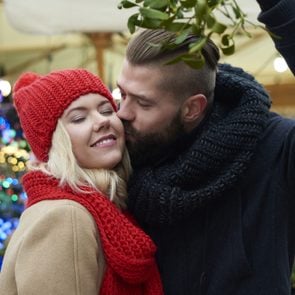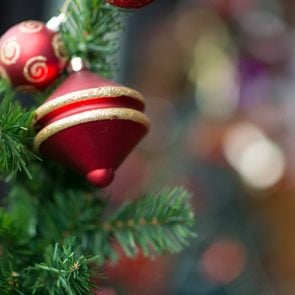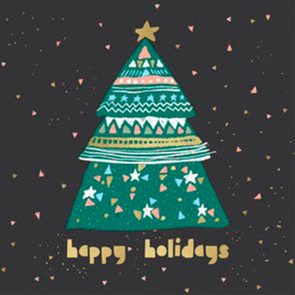What Are the Christmas Colors, and What Do They Mean?
Updated: Dec. 21, 2023
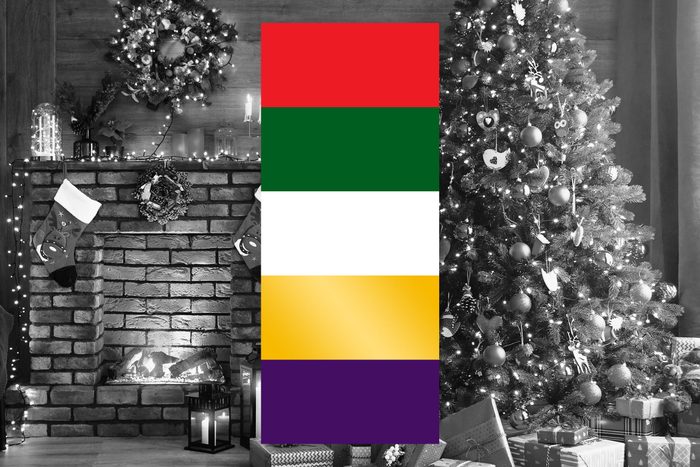
Turns out, red and green aren't just a pretty pair—this color scheme has been associated with winter holidays for centuries
Christmas is all about bright, sparkling colors lighting up the long winter nights. Red and green, in particular, are two Christmas symbols that are instantly recognizable—and can instantly put you in the holiday spirit. After all, what is Christmas without red and green string lights, Christmas decorations, stockings, cookies and ugly Christmas sweaters? It wouldn’t even feel like the holiday season without those Christmas colors.
But how did we land on red and green to represent America’s No. 1 favorite holiday? This Christmas tradition is a mix of legend, history, religion, pop culture and, of course, a whole lot of marketing.
Get Reader’s Digest’s Read Up newsletter for more holidays, humor, cleaning, travel, tech and fun facts all week long.
Why do we have Christmas colors?
Many holidays have signature colors. One reason is that people find meaning in certain colors, to the point where the color alone can evoke particular feelings or memories, says Angelo Randaci, a horticulturist and expert in the symbolism of plant colors. For instance, just seeing a red and green poinsettia may bring back vivid memories of Christmas Eve at your grandmother’s home and all the happy feelings there.
There may also be an economic reason: Signature colors help with marketing and branding products related to a holiday. You may already own a door wreath, but buying a new one, decorated with red and green, will show your Christmas spirit. Speaking of which, if you need a new one, we’ve got a whole bunch of Christmas wreaths for you to choose from.
Where we got red and green
The classic color combo goes back to an artist in the 1920s. No, wait—it traces back to Victorian Christmas cards in the 1800s. Or is it from painted medieval church panels? The truth is, Christmas colors stem from all this—and the history goes back even further, according to Spike Bucklow, PhD, an art historian from the University of Cambridge’s Hamilton Kerr Institute who has done extensive research on this topic. “We associate Christmas with red and green because that’s the way we’ve always done it,” he explains. “But one can trace the roots of this color coding back through the centuries, to a time when the colors themselves had symbolic meaning, possibly as a way of accentuating a significant division or a boundary.”
Centuries ago, ancient Celtic peoples revered red- and green-colored holly plants for being evergreen, and they believed holly was meant to keep the earth beautiful during the dead of winter. They used the bright plant as a symbol of protection and prosperity in their midwinter celebrations. After that, red and green were a common pairing used on religious screens, called roods, in medieval churches. It was likely due to the availability of ink pigments at the time, but it solidified the color combo and associated it with Jesus. People during the Victorian era continued those color themes in their cards and decorations, combining both the winter and religious symbolism.
You can thank Coca-Cola for solidifying the Christmas colors in Americana. Their advertising in the early 1900s featured a grandfatherly man with rosy cheeks, a white beard and red clothing with green accents. It was so popular that it became the default image of Santa and branded red and green as Christmas colors in marketing.
What are the Christmas colors, and what do they mean?
Red and green are the classic Christmas colors, but they’re not the only hues associated with the holiday—and each one has its own special meaning, says Randaci. It’s definitely something to keep in mind when choosing Christmas ornaments and other assorted holiday decor.
Red
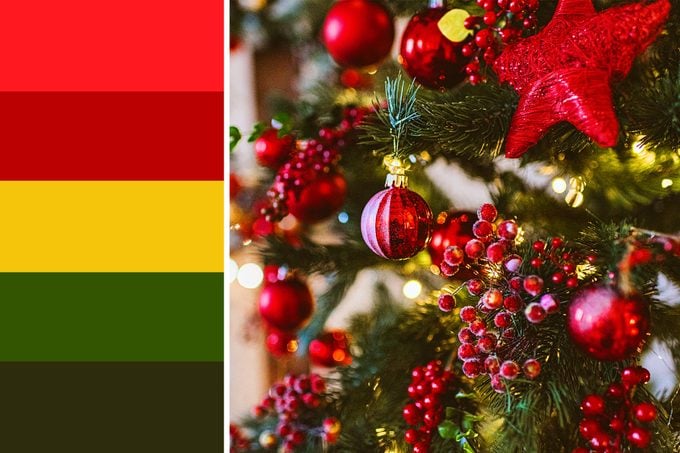
This deep hue symbolizes the blood of Jesus Christ, the person whose birth the holiday celebrates. It is also associated with Santa Claus and his distinctive outfit. In general, red is often used to represent love, courage and romance, other popular holiday themes.
Green
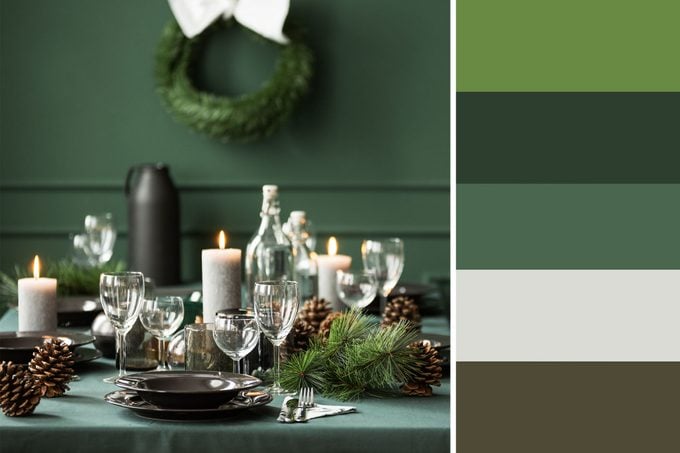
Evergreen plants like holly and mistletoe are used at Christmastime to represent Christ’s life and eternal nature. In pagan times, they were a powerful reminder that nature keeps growing, even through the cold times. Green often symbolizes money, good luck and health through the holidays and into the new year.
Gold
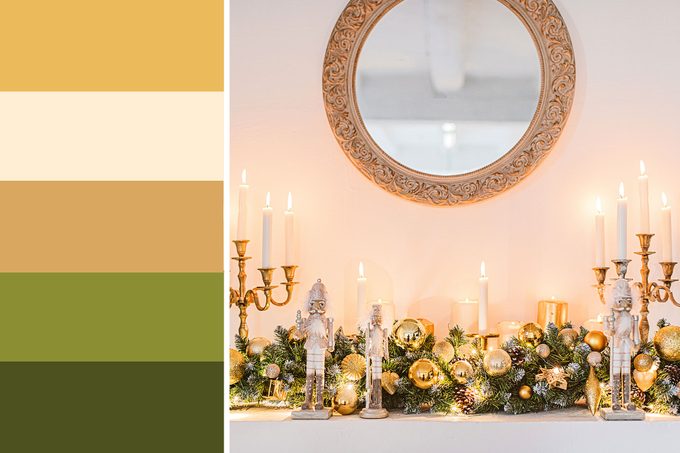
Bright gold is an oft-used representation of the sun and the Son (meaning the Son of God) and is used at Christmastime to bring light into the darkness. The beautiful metal was also one of the gifts the Wise Men brought to the baby Jesus and is still a popular holiday gift. Gold is used to convey wealth, prosperity and glamour.
White
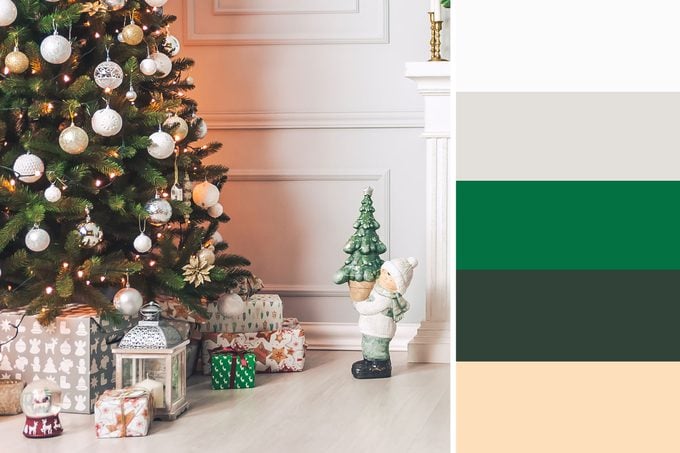
What is more Christmasy than a blanket of fresh white snow? (At least in the northern hemisphere!) White also hearkens back to pagan winter solstice festivals. It represents purity and the triumph of good over evil, two powerful themes at Christmastime.
Purple
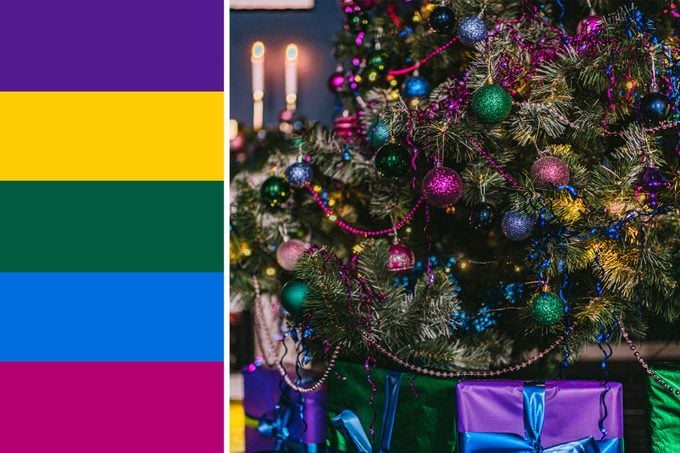
This rich shade may not be at the top of your list when you think of Christmas colors, but it is the main color of Advent, the period before Christmas, when Christians fast and repent in anticipation of Christ’s birth. Purple symbolizes royalty, luxury and a sense of magic or whimsy.
The bottom line
It seems that the history of how the Christmas colors came to be is a lot like the holiday itself: rooted in religious tradition, modernized by commercialism and continued by spirits of joy and good cheer. Now who’s ready to start thinking about Christmas tree ideas?
Sources:
- Angelo Randaci, expert in the symbolism of plant colors and master gardener and horticulturist at Earth’s Ally
- Spike Bucklow, PhD, art historian from the University of Cambridge’s Hamilton Kerr Institute and author of “Who colour-coded Christmas?“
- Coca-Cola: “Is it true that Santa traditionally wears red because of Coca Cola?”




















